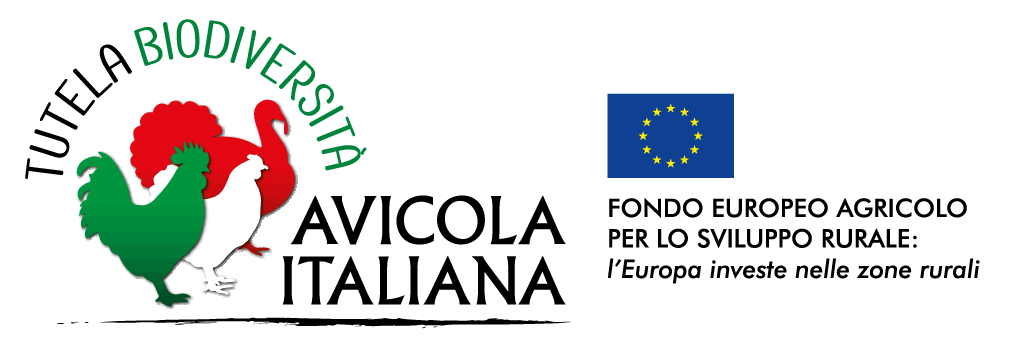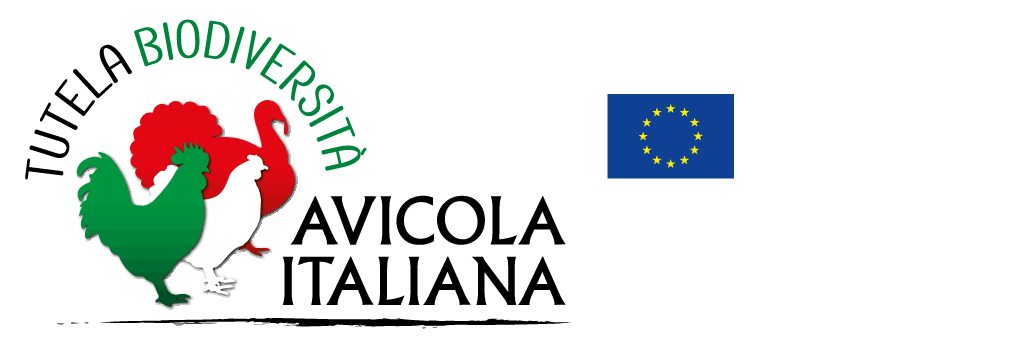Mericanel della Brianza
Geographic origin: Lombardy, in the area of Brianza
Geographic distribution: Lombardy
Estimated total population size: 160 (Castillo et al., 2021; ANCI, 2022)
Extinction risk status (FAO, 1998): Threatened conserved
Any other specific information: Bantam
Historical origin of the breed
Mericanel della Brianza breed has probably originated from crossbreeding of local breeds with Asian bantam breeds introduced to Northern Italy in the 1600s up to last century.
In those years, trades were frequent also in agriculture and breeding; trading with merchants from Venice, facilitated by closeness, was probably the way that brought Asian bantam chickens to Northern Italy, thus leading to the diffusion of small-sized breeds such as Pepoi in Veneto and Mericanel della Brianza in Lombardy.
The breed is named after its geographical area of origin, Brianza, an hilly region lying north-east of Milan, and including the provinces of Monza-Brianza, Lecco, Como, and a small part of the province of Milan. It is supposed that the name “Mericanel” comes from a Brianza dialect word for “american”, thinking by mistake that the breed originated in America, or from the Brianza name “mericanel”, used for particularly lively children.
At the beginning of the XX century, MB chicken were present in small rural farms as free-range chickens. In the XIX and XX centuries, Brianza was a rural land, where people’s sustenance used to come from sharecropping; in such a context, poultry was not foraged, apart from capons only, intended for the bourgeioisie. MB chickens, therefore, used to live free around the farms, without either any care about their food or about livery selection.
MB chickens are well proportioned, round-shaped, and elegant, but have also a strong temperament. It is a rural breed, that prefers to stay in the open; it is very lively, not demanding, and able to find food (insects, fruit, and other plants) in the wild to satisfy its nutritional needs; it has a wild nature and a good flying ability that allows chickens to reach the higher branches of the trees, up to 12-15 meters from the ground. Hens have an excellent brooding aptitude and are excellent mothers, exemplary in defending and leading the offspring.
The breed has never been selected on the basis of liveries, but rather based on other properties such as rusticity, small size, and yellow skin shanks.
MB belongs to dwarf or bantam breeds, frequently categorised in the past as “fancy birds”. The small size of birds and eggs made them unsuitable as food, so they were reared mainly for decorative purposes. At the begining of the 1900, some authors claimed that bantam chicken breeds shouldn’t even be included into poultry management books, being used only for fancy, not productive, purposes. However, their high brooding aptitude, also towards eggs belonging to other species (i.e. game birds), the ease of breeding, and their strong scratching activity, helpful for the house keeping of the courtyard in the villas, guaranteed their survival.
Bibliography
Tona M, Tona S (2017) Mericanel della Brianza. Storia, territorio, allevamento e selezione. Ed. Bellavite, GreenPrinting, Missaglia (LC)
Trevisani G (1919) Pollicoltura con Appendice sull’allevamento industriale dell’anatra. 10a Edizione, U. Hoepli Editore Libraio della Real Casa, Milano
Qualitative morphological traits
Feather morphology: Normal
Feather distribution: Normal
Plumage structure: Stiff, abundant with wide feathers
Plumage colours:
Most frequent colours: White, Black mottled, Gold
Other colours: Black, White gold, Silver
Colour features:
Single colour, without sexual dimorphism: White, Black
Bi-colour, without sexual dimorphism: Black mottled
Bi-colour, with sexual dimorphism: Gold, Silver, White gold
Colour pattern:
White – Pure white, more brilliant in the male. White down.
Black – Intense black, with strong brilliant green sheen in the male. Grey to black down, even lighter in the male.
Black mottled – Brilliant black plumage with green sheen. Several feathers have white spots at the tips, preferably V-shaped. Mottling must be as uniform as possible. Spots at the tips of flights, sickles and hackle feathers have to be considered a merit. In the male, the pattern is less marked than in the female, thus it appears to be darker; one to four white primaries are permitted. Thin blackish streaks on the shanks permitted. Down ash-grey to grey.
Gold – In the male, head intense gold-yellow, neck hackle golden yellow, slightly lighter at the end, with black striping with green sheen. Back, shoulders, and flight coverts brilliant dark red. Saddle hackles golden-yellow, with black striping with green sheen. Main wing coverts black with metallic blue/green sheen. Primaries black, with narrow brown edging on the outer web. Secondaries inner colour and tips black, outer colour brown forming wing bay. Breast black with green sheen, free from traces of brown. Belly and legs black. Tail black with strong green sheen. Down greyish. In the female, head golden-yellow; neck hackle golden-yellow with black striping with green sheen. Primaries black with narrow outer edging with brown peppering. Secondaries inner colour black and outer colour brown with peppering. Remainder of the plumage brown gold with fine and even black peppering, shafts can be lighter. Breast salmon, darker in the upper part. Belly and legs grey/brown. Tail black, main tail coverts marked like rest of the plumage.
White gold – In the male, plumage mainly cream white. Head red/orange, neck hackle light golden-yellow, darker, with cream white striping, towards the end. Back, shoulders, and wing coverts dark carmine-red; the colour of the back is lighter towards the saddle. Saddle hackles orange to light orange with thin barely visible cream white striping. Main wing coverts cream white. Primaries cream white, thin light brown edging permitted. Secondaries inner colour and tips cream white, outer colour reddish-brown forming wing bay. Tail cream white, in intensly coloured birds slight black sprinkles permitted both on sickles and on main tail feathers. In adults, slight light red edging on breast and on tail coverts permitted. In the female, plumage cream white. Head light golden-yellow. Neck hackle light golden-yellow with cream white striping. Breast and front of neck uniform and intense salmon.
Silver gold – In the male, head golden white. Neck hackle with black striping with green sheen. Back, shoulders, and wing coverts white. Saddle hackles silver white with black striping with green sheen. Main wing coverts black with metallic green/blue sheen. Primaries black with narrow white edging on the outer web. Secondaries inner colour and tips black, outer colour white forming pure white wing bay. Breast black with green sheen free from traces of white. Belly and legs black. Tail black with strong green sheen. Greyish down. In the female, head silver white. Neck hackle silver with black striping with green sheen. Overall silver white plumage with fine and even black peppering, white shaft permitted. Primaries black with narrow silver white edging with peppering. Secondaries inner colour black and outer colour peppered silver. Breast salmon, darker in the upper part. Belly and legs grey. Tail black, main tail coverts marked like the rest of the plumage.
Chick plumage colour: Yellow, grey, reddish, depending on the colour
Comb type: Simple comb, upright, red, fine-textured, narrow at the base, with the blade carried backwards, away from the neck; in the female it can fall to one side without covering the eye, but it is often upright.
Comb spikes: Five spikes
Ear-lobe colour: Red
Beak colour: Yellow to horn
Iris colour: Orange
Skin colour: Yellow
Shank colour: Saffron yellow
Shank feathering: Free from feathers
Quantitative morphological traits

Genetic traits
Characterisation of the breed with Single Nucleotide Polymorphisms (SNPs)
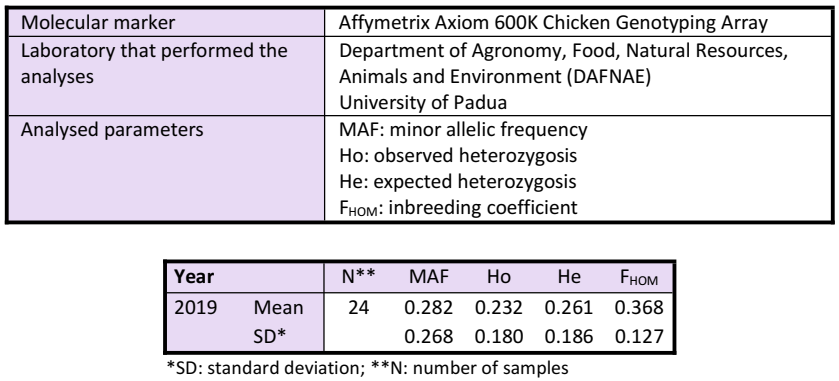
Characterisation of nucleus populations with microsatellites and mating plans
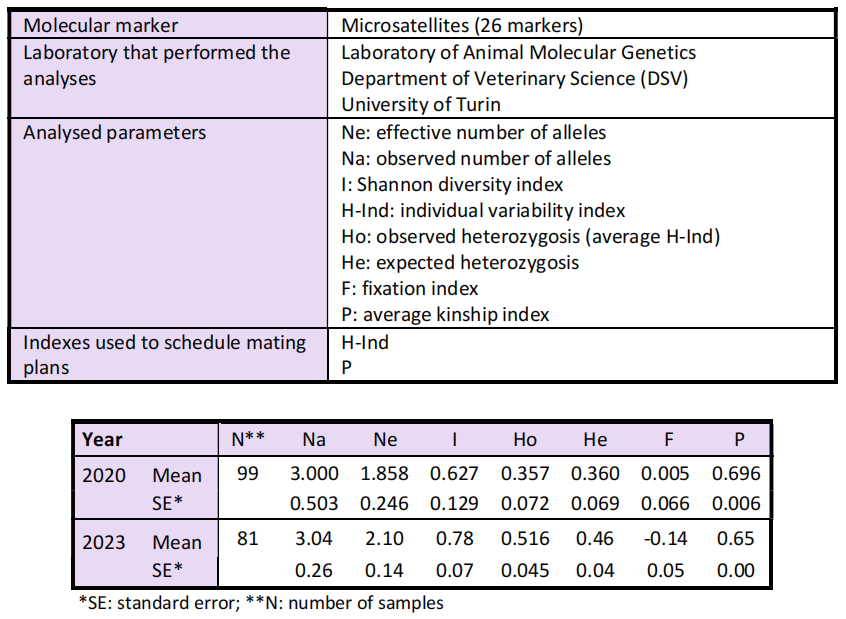
Reproductive and productive quantitative traits
Oviposition, brooding and incubation data
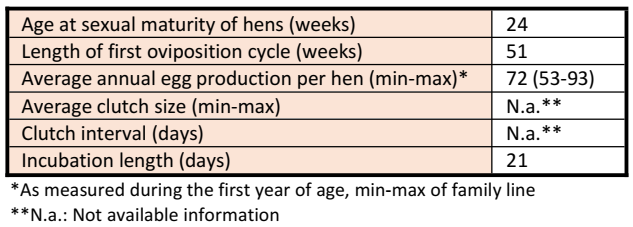
Egg-quality traits

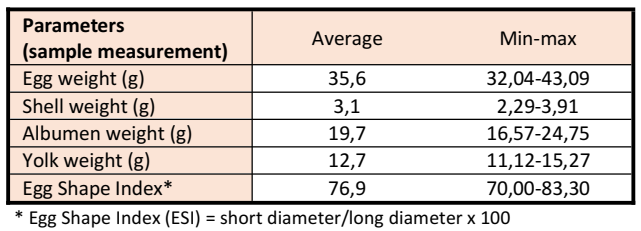
Reproductive traits
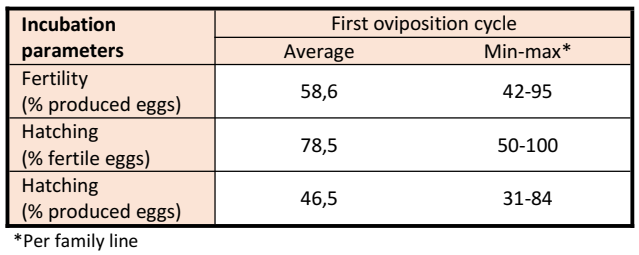
Body weight and growth data
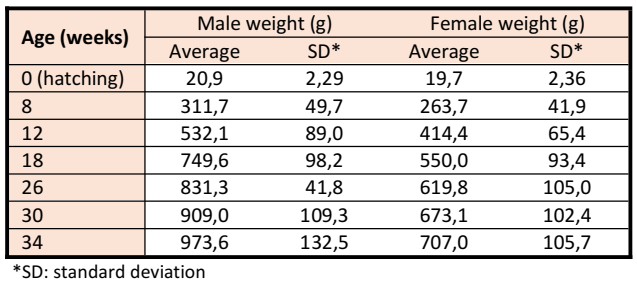
Mortality
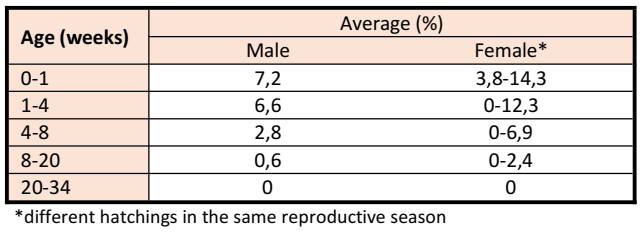
Rearing traits
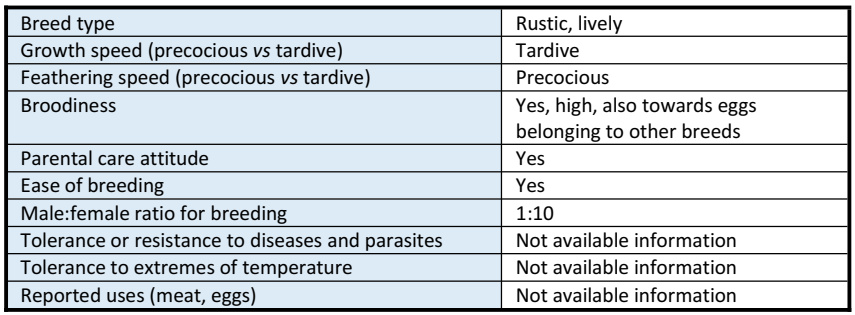
The presented data were registered in the nucleus population conserved at the University of Milan (UniMI).
Technical data sheet
(The layout of the data sheet is ready for the booklet format. Print on both sides of paper, selecting “flip on short edge”.)
Germplasm collection
The breed is conserved in our Cryobank with 44 semen doses from 9 donors.
Mating plan
Download the latest mating plan for the Mericanel della Brianza breed:
Latest update: February 06th, 2025
